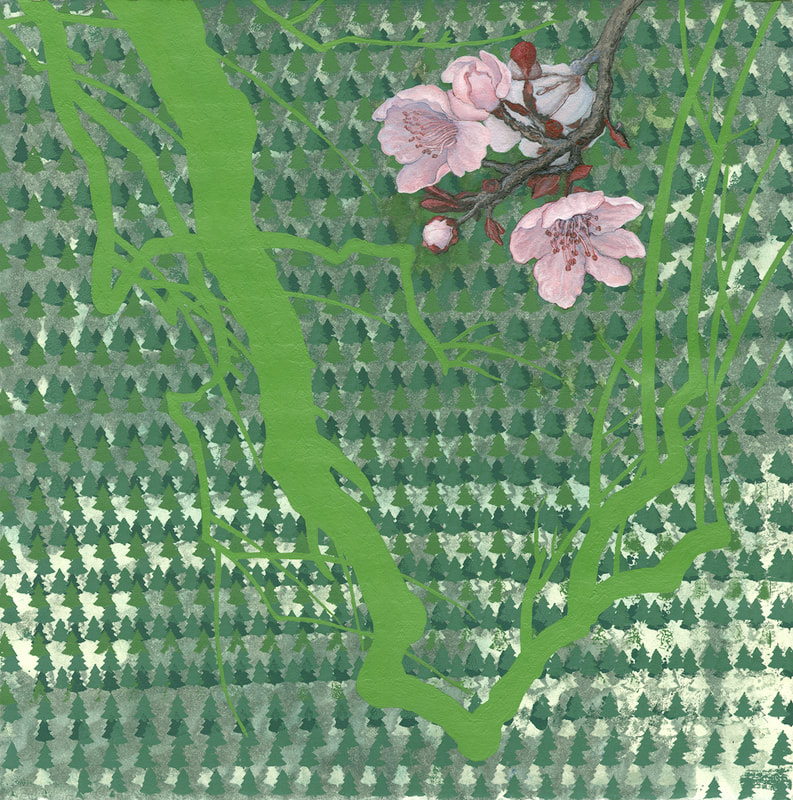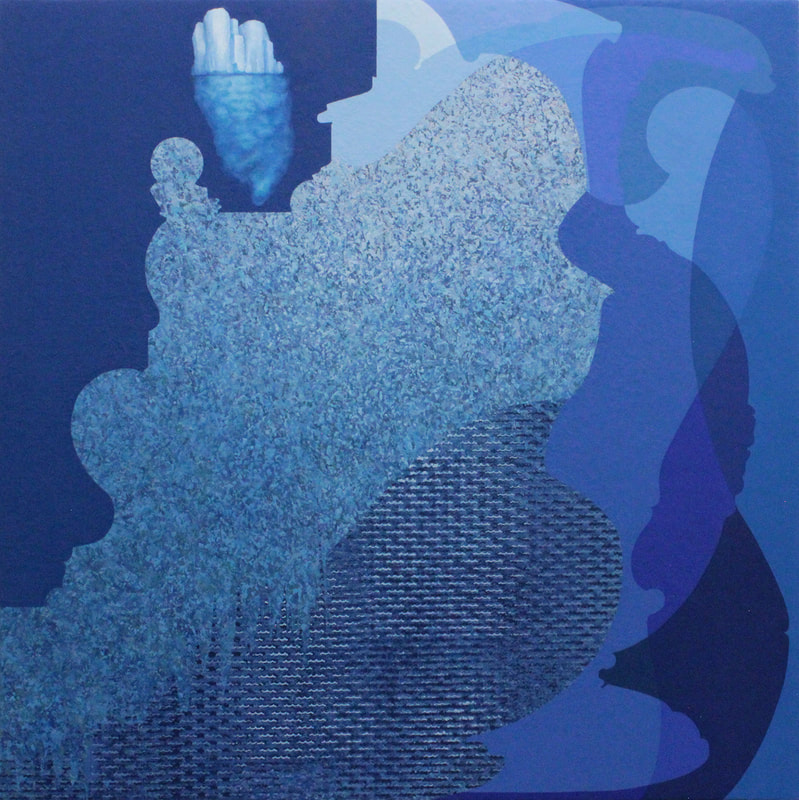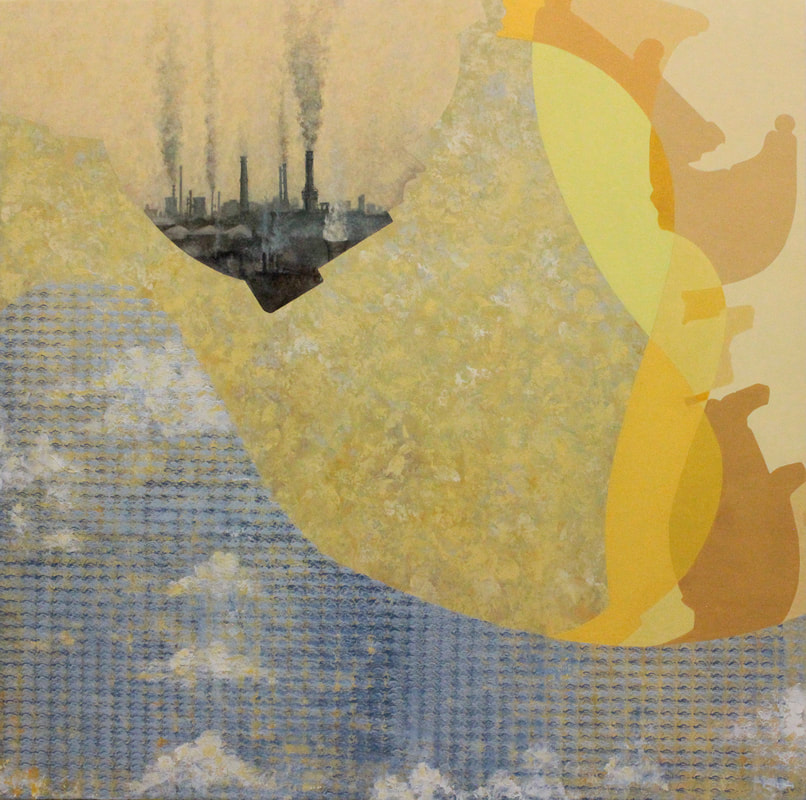|
|

Paul Flippen was born in Berlin, Germany, and as an Army Brat bounced around between Germany, Texas and California at the whim of the Pentagon. He earned a BFA in Painting and a BA in Art History, both from the University of Texas at Austin. He completed his studies at Pratt Institute, New York, receiving an MFA in Painting and an MS in the Theory, Criticism and History of Art. Paul is a painter whose work features layers of pattern, abstraction, and imagery that communicate through several visual languages simultaneously, inviting the viewer to enter a dialog with the work.
The Interview
At what point in your life did you know that you wanted to become an artist? Did the realization emerge slowly?
I was not an artist as a child. There was no precedent for a painter to become the President of the United States. And be an Astronaut. And win the Superbowl. All of which were clearly my destiny, at least in my childhood imaginings.
I fell in love with the challenge of art in High School. Maybe 15 or so? In art, I discovered not only an arena in which infinite refinement of skills is possible, but also the paradoxically enchanting fact that I wasn’t initially all that good at it. For a bored suburban nerd, the discovery of an endeavor that fosters rigor and demands the application of great effort can be captivating. I found that art is the perfect intellectual puzzle.
Also, I wanted to be able to touch the exalted balance of expression and form found every morning in Calvin and Hobbes strips on the funny pages.
How did you evolve your style and favorite mediums?
As an army brat, I had the opportunity, and obligation, to live in many different places. The last time my family was stationed overseas, my Sainted Mother proceeded to drag the family to every art museum within driving distance. As Europe is composed of tiny little countries, and as my family was used to driving across (literally) Texas-sized distances, “every museum within driving distance” turned out to be quite an impressive list. So, although as a child I had no notion of becoming an artist, in retrospect, I am constantly discovering the ways in which my experiences with those masterpieces of art had an effect on my conception of art and its significance.
And comic books. Telling a story through pictures – communicating visually – I learned that in equal parts Albrecht Dürer and Batman.
What are your time management techniques? Do you have regular working hours...or favorite times to work?
I find that I’m most productive in the afternoons and evenings – and on really good days that can flow into night.
I try to keep regular working hours, but it doesn’t always happen, alas. My schedule is dictated somewhat by my teaching obligations - I teach Foundations at Colorado State University (Go Rams). So, occasionally I have meetings or grading I must attend to. One sneaky benefit to the increase in zoom meetings in the last year: I can quietly draw while listening to the discussion.
For time management, I rely on several tricks:
I participate in an accountability group. We post weekly studio goals and then follow up with what we achieved. There’s no real consequence if we don’t make the goals but defining and stating them is helpful.
Also – and this one is a bit silly, but it works – I listen to audiobooks in the studio when I get to the execution phase of the work. It helps me to come back the next day; not only to continue progress on the on painting, but also to find out what happens next in the story.
Do you work on more than one piece at a time, or primarily just on one?
I have a kind of “batch and then focus” working method.
For many of the works I will have a process-based abstraction that forms the ground upon which I place imagery. I will work on several pieces at once when I’m building up those layers. When defining content and imagery for a body of work, I will also work on groups all at once. Sketching, defining compositions with tracing paper, researching subject matter – those can all happen in batches.
Once the field of the abstraction is resolved, and the compositions for the work are at least somewhat clarified, then I work on one piece at a time. For the more detailed aspects of my work, I find it easier to work through one piece steadily until it is complete.
What would you say is your biggest influence--that which keeps you working, regardless of all else, your most steadfast motivation?
Art (and in particular painting) has the thrilling habit of rewarding each new level of competency and understanding with a new challenge – some new aspect or issue that had not been considered before. Trying to communicate new conceptual concerns, beyond simply achieving a modicum of technical facility.
Also, my brain needs it. Like a lot of artists, I have a frustrating combination of depression, attention deficit disorder, and general social anxiety bouncing around in my head. Art making really helps. I get cranky if I go too long without working in the studio.
Does trying something new and not knowing the rules -- the boundary pushing -- create anxiety or excitement in you? (Or both?)
Usually excite. Part of what I love about art is that there is always something new to discover. No matter how much I work, there is always room for growth.
One of the benefits of being reared on those masterpieces safeguarded in the museums of Europe is that you remain, throughout your life, very much aware of the fact that Jan van Eyck is a better painter than you.
Do you enjoy having the "duality of both chaos and control" or are you happiest with a set plan?
What’s the old Eisenhower quote? “Plans are useless, but planning is everything.” I like having a set plan, but I don’t expect the universe (or my own artwork) to comply.
Still, I seem to get more done when I have some sense of what I’m hoping for and can respond to what actually happens when I get there. I have to sit back and re-assess often, adapting to the “happy accidents” that develop – even if they aren’t all happy.
Perhaps I plan for the duality of chaos and control?
Do you have any projects or events forthcoming?
Building on the working methods I (re)discovered during the completion of 36days, I am working on my second book. There has often been a narrative element to my artwork. Combining images and text is what got me into art in the first place, and I’m finding that more and more of my projects are grappling with multiple ways of communicating.
Many of my previously forthcoming projects have been upended by the pandemic. I will be participating in a Wintertide Residency at the Millay Colony for the Arts in December of 2021, that was rescheduled from this past January when travel was restricted. I have a few exhibitions that are currently in rescheduling limbo from COVID and are still too tentative to mention. Still, on the whole, I’ve gotten off lucky. 2020 was devastating for so many; here’s to better days ahead.
Ashes
oil and silkscreen on canvas on panel
32 x 32 inches
2020
$3000
oil and silkscreen on canvas on panel
32 x 32 inches
2020
$3000
Blossom
ink, watercolor, acrylic, & silkscreen on paper
11 x 11 inches
2020
$500
ink, watercolor, acrylic, & silkscreen on paper
11 x 11 inches
2020
$500
Equilibrium
oil and silkscreen on canvas on panel
32 x 32 inches
2020
$3000
oil and silkscreen on canvas on panel
32 x 32 inches
2020
$3000
Miasma
oil and silkscreen on canvas on panel
32 x 32 inches
2020
$3000
oil and silkscreen on canvas on panel
32 x 32 inches
2020
$3000
Contact the artist directly:
PAUL FLIPPEN
https://paulflippen.com/home.html
[email protected]
Instagram: https://www.instagram.com/paul_flippen/
Twitter: https://twitter.com/Flipworks
PAUL FLIPPEN
https://paulflippen.com/home.html
[email protected]
Instagram: https://www.instagram.com/paul_flippen/
Twitter: https://twitter.com/Flipworks



